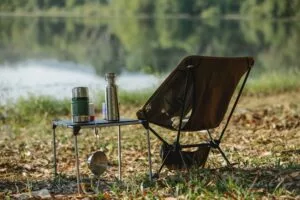
The Best Water Treatment Systems for Backpacking
Having water for any type of outing is important, especially when out in the great outdoors. Physical exertion and warm temperatures deplete your hydration, so drinking water is key, so you do not suffer from the effects of dehydration. But what happens if you are physically limited by the amount of water you can bring? Backpackers have been faced with this question for a long time.
Even the cleanest looking glacial water up in the mountains can contain bacteria, parasites, micro-organisms, and waste from the animals in the area, any of which could cause health issues after drinking. It is essential to filter any water at your campsite or water source before using it for drinking, cooking, or washing. Bringing one or two methods of water purification will ensure you can turn natural sources of water – like lakes, ponds and streams – into a safe water supply.
Below, you will find out list of the best water filters and water purifiers for backpacking and camping. If you are looking for more guides for outdoor gear, check out our camping section for more buying guides and tips!
Our top picks
Common water treatment methods
The different types of water sources you will find will vary immensely in terms of water condition and pertinent pathogens. Different treatment methods will perform better in certain kinds of water than others. The most common water treatment methods for camping and backpacking are as follows.
Water filters: Depending on the size of the pores that make up the filter, water filters are designed to remove pathogens as water is filtered through them. All water filters should be able to filter Protozoa and larger bacteria, but only filters with very small pores will protect against most bacteria, or the much smaller viruses that can be present in the water supply. If you are travelling to a locale where viruses in the water are a concern, consider pairing a filter with chemical treatment. Filters are also a strong way of removing particulate, such as sand, silt or algae from the water.
Chemical treatment: Chemical treatment involves instilling your water supply with chemicals that will kill pathogens in the water. Chemicals do well to kill bacteria and viruses, but can come up short killing some protozoans, like cryptosporidium, who can be more resistant to chemical treatment. They also do nothing against filtering particulate. Still, chemical tablets are a great inclusion to any back up pack, just in case that your water system fails or another emergency situation arises.
Keep In mind chemical treatment is not advisable for all – pregnant women, young children and people with medical conditions should consult a medical professional before consuming water treated with common medical treatments. Most are probably chlorine dioxide these days – but chlorine and iodine are also active ingredients in some chemical water treatment products.
Water purification: Water purifiers are any unit that combine filtration with chemical treatment. Water purifiers don’t just stop short at killing whatever type of pathogens are in the water, but also filter particulate, chemicals, heavy metals, and flavour and odour compounds that can be found in unscrupulous water sources. If you are looking for a system to completely purify your water, expect to pay a little extra, as these more thorough systems can cost more money.
UV-light purification: UV purification is common within commercial bottling plants and municipal water systems, since the UV light damages microbes, pathogens and viruses effectively, without adding chemicals to the water. UV technology is one of the most efficient ways to treat water, so it makes sense that it might be utilized for backpacking.
However, there are some downsides that make UV-light purification not the best choice – one, cloudy water must be filtered, as the clarity of the water influences how well the UV treatment will work, and you will still have sediment in your water. Two, the UV-light purification will require batteries, and so what happens if you run out of batteries? Or if a technological component of this filter breaks when you are on trail.
Boiling water: Boiling water does kill pathogens, so it is a strong backup choice in the case something fails. However, it takes time, uses fuel, and does not filter particles and debris out of your water. Not the strongest option, but a decent plan B or C.
What to look for in a water filter
Beyond the type of filter or purification system you are in the market, the following factors should be considerations before deciding on the treatment system perfect for you.
Capacity: How much water can be collected to filter at once? There are many water filters without the ability to collect water, so you will need to know what you would need to bring with you to filter water. Ensure that with any filtration system you use, treated water and untreated water do not come in contact with one another.
Ease of use: The implications of this question are two-fold: firstly, is water treatment difficult, requiring considerate effort? And secondly is treatment an involved process, where you have to give it your constant attention, or can you set it and forget it? Gravity filtration systems utilize gravity to draw water across the filter, while handpump filters will require more constant work to filter water.
Lifespan: Filters and UV treatment systems both have components that wear down and potentially break over time. Chemical treatment also has a finite amount chemicals included. Regardless of which type of water treatment system you choose, you should expect to replace it or some component within it down the line. We tried to discuss the lifespan of each system and its components, so you know when you should think about replacements down the line and get the most of your money initially.
Weight and packability: Weight and space always are considerations when it comes to backpacking gear. It shouldn’t surprise you: when you are carrying all your gear with you, you do not want to be weighed down with heavy gear. Luckily, filters can be only a small portion of your packed weight, but if you can save some weight using a lightweight water filter, your back and your pack might both thank you.
Price: In terms of affordability, water filtration systems are one piece of a backpackers kit that are typically affordable. The Sawyer Squeeze, Katadyn BeFree, and MSR TrailShot – some of the best filters on the list – are all within the $70 dollar price range. Chemical treatment systems can be even cheaper. Consider the lifespan versus the price of any water treatment system you are looking at – you can potentially save more in the long term if your filter lasts longer.
The best budget filter
Sawyer Squeeze
For first time backpackers and ultralight aficionados alike, it is hard to go wrong with the Sawyer Squeeze. It’s a fast, effective, lightweight, and inexpensive way to filter your water. There’s not much more you could ask for in a personal filtration system.
The Sawyer Squeeze is small, cylindrical unit, that easily fits on top of your average bottled water bottle. Included are a number of squeeze bags (up to the amount you want), as well as a number of other adapters and a syringe. Even if there are numerous components you should bring along with the Sawyer Squeeze, the Squeeze proves packable (with its included mesh bag) and light, with all of the included components totaling around 5.7 oz. or 161 grams.
Utilizing a filtration system with a certified 0.1 micron filtration barrier, the Sawyer Squeeze can remove bacteria, protozoa and cysts from your water supply. In North American locales where viruses are not a concern, this type of protection is all you need, however when venturing out of North America where viruses and heavy metals in the water is a concern, the Squeeze will not offer the protection you need.
There are many methods of filtration possible using this handy device. The most common is utilizing two squeeze bags or water bottles – one for clean and one for dirty water – collecting dirty water and squeezing the water through the Squeeze, resulting in clean water in the other bottle. This method offers an impressive flowrate, reported as fast as filtering 1 litre of water in approximately 40 seconds, although those rates might vary in the field. However, you can simply collect dirty water and drink directly through the Squeeze or use the straw attachment to drink directly from the source. Regardless of method of filtration, you do need to get up close to the water to filter the water.
Sawyer themselves project the filter to treat over 14,000,000 litres of water throughout its lifetime. While this number seems like a marketing figure, the Sawyer Squeeze should offer a long lifespan, granted you are careful with this unit and take care of it (the manufacturers offer a limited warranty too). Available replacement components, like O-rings, can extend the lifespan of the Squeeze. However, the least durable component according to research are the included squeeze bags. If used to filter water, the bags are prone to break at the seams if too much pressure is being applied. From my experience with the Sawyer Squeeze, we did not even bring the squeeze bags with us on the trail, instead bringing two Smart water bottles to function as squeeze bags. This way, you can use a more dependable container for both clean and dirty water without spending too much extra.
When using with silty water, the silt can make its way into the filter and disrupt the flowrate of the water. In this case, it is important to bring that aforementioned syringe to backflush this filter to maintain it’s effectiveness. Keeping maintenance in mind while using the Sawyer Squeeze will improve its lifespan and effectiveness greatly. Also, don’t let this unit freeze – if temps might dip below zero, do what you can to prevent this unit freezing, even if it means sleeping with it.
Overall, there is not a lot of complaints users had regarding the Sawyer Squeeze. For such an inexpensive unit, you would not expect that the Sawyer Squeeze would perform so well in so many categories. Users praised the quality of filtration, the ease of filtration, the longevity, the weight, the size, and the lifespan of this product when taken care of.
In my experience using the squeeze, it does live up to the hype mostly, however over the course of one trip, the flowrate did drop significantly throughout the trip – and perhaps more upkeep was required to maintain the flowrate. At that point, the amount of time it took to refill our water bottles became too much and my Grayl became the choice from there on out. For this reason, I would not recommend using a Squeeze for larger groups of people, unless there are at least one unit for every two people.
Pros
- 0.1 micron sized filter removes bacteria, cysts and protozoans.
- Small and lightweight, even with all components included.
- Inexpensive.
Cons
- Flow-rate can easily be disrupted after use in certain water conditions.
- Included bags are prone to fail.
The best individual water filter
Katadyn BeFree
The Katadyn BeFree is another filtration system with significant hype. This filter is easy to use, filters fast, and has a minimal weight and size penalty. Overall, if you are looking for a lightweight, inexpensive filter to bring out with you on the trail, this is one of your best choices.
The Katadyn BeFree combines a 0.1 micron filter and a soft-sided water bottle to simplify the water filtration process. The BeFree can be a complete filtration system in its most basic form, holding a reservoir of untreated water in the bottle and filtering while you drink. Throw an extra Smart water bottle or two to boost your max water capacity for long dry sections of trail, or an Aqua clip to attach the BeFree to your backpack to maximize the use of this compact filter system. The soft-sided bottle can fold down impressive small when not in use, and at only 2.1 Oz or 63 grams, the Katadyn BeFree is the lightest filter available when you count all the required components together.
With that aforementioned 0.1 micron filter, the Katadyn BeFree protects against the pertinent pathogens in North American locales, protecting against bacteria and protozoa. This filter does not protect against viruses, so it is not a great choice in certain locales, and you should do research on water quality before buying a filter for international use.
One of the most impressive aspects of the BeFree is its fast flow rate. We could not source a number to exemplify how fast this device filters, but compared to other filters like the Sawyer Squeeze, users and reviewers agree that the BeFree filters faster. It’s also decently durable: The BeFree lasts roughly 1000 litres, giving this inexpensive filter a long enough lifespan for you to get your money’s worth.
The Katadyn BeFree is designed to be sipped on – you fill up the bottle and sip through the filter as you go – but you can also filter into different bottles. You have the choice between a 0.6L and 1.0L bottle, but in our opinion, there’s no real reason to opt with the smaller version, as the cost, weight and size savings of the smaller size are negligible. Katadyn also offers a larger BeFree with a 3.0L Hydropak, however the bulkiness at this size is less than ideal in our opinion.
However, there are some criticisms regarding the BeFree system, pertaining to the bottle. The soft bottle component can burst around the seam around the rigid top collar piece, or develop pin prick leaks after use. The bottle component is clearly not long-lasting, but you can buy extra bottle components in case one fails on you. You can buy replacement bags or new bags like this compatible one from CNOC, or seal up pinpoint holes with Aquaseal. Overall, these issues pale in comparisons to the successes Katadyn accomplished with this filter.
Pros
- Exceptionally fast flowrate.
- Lightweight filter is packable even in the most overstuffed bags.
- Inexpensive price.
Cons
- The included soft bottle is not durable and can develop holes and tears.
The best hand pump water filter
MSR TrailShot
Another simple filtration system, the MSR Trailshot is a lightweight, compact handpump filter, great for small groups. Comparable in performance to price to top picks like the Squeeze and the BeFree, the MSR TrailShot makes collecting and filtering water incredibly easy.
The MSR TrailShot consists of a filter surrounded by a silicone bulb, and a long hose to collect water with. Utilizing a hollow-fibre filtration system, composed of thin fibres with 0.2 microns pores inside to trap pathogens, the MSR Trailshot filters down to the level of bacteria and protozoa. Like many comparable filters, the MSR Trail Shot does not removes viruses, chemicals, or heavy metals from the water.
Using the MSR Trailshot is different to some of the other filters we have covered. Collection of water involves submerging the end of the hose into the water supply, and then squeeze the bulb pump to begin filtering. This system makes accessing most bodies of water much easier than other systems where you have to get up close to filter water. The end of the intake hose features a filter end, so you do not suck up any debris floating in your water source. Since this filter is a pump, you do have to put continuous work into pumping. Due to the size, you pump water using your fingers instead of your arms. This makes the MSR TrailShot less than ideal for filtering water for longer groups, as someone will likely be pumping water for a long time.
In testing the TrailShot proved to be able to filter 1 litre in just over one minute. This is an average flowrate overall, we cannot complain about this rate. It does seem that sediment and silt may cause the flowrate to drop, however. Some users recommended trying to filter only from rivers to maintain it’s flowrate.
Weighing in at 159 grams makes the TrailShot far from the lightest filtration system on this list, but unless you have ultralight aspirations, this is a minimal consideration. Despite the hose component, this filter remains super packable. You will need to bring a water bottle or two, but this filter is small and light enough that you won’t mind bringing it along with you on the trails.
The TrailShot’s cartridge is designed to filter 2000 Litres – putting it ahead of the Katadyn BeFree’s 1000L lifespan. To ensure longevity, it is easy to backflush the Trailshot of sediment or other particulate that can clog the filter – but according to OutdoorGearLab, it can be hard to determine the effectiveness of backflushing, “since you are just forcing the water back out the hose hole”.
Overall, users would recommend this filter. Users liked the easiness of pumping water, the long hose perfect for collecting water, and the small size. Once you have had to slide down a muddy embankment or seriously get your feet wet to get to water, you will find the hose mechanism of this filter a godsend. However, there were concerns about the flowrate dropping after storage, and so it is imperative to store this filter at home as the directions specify. Some users also found that this filter was quick to clog up on them, with the flow rate faltering after just one outing. We understand the risk of using filters in the backcountry involve the filters clogging and slowing down immensely. This is something that can be hard to deal with, and so it’s imperative to bring a plan B with you on any backpacking trip where you’ll be far from resources. Despite these criticisms, the overall reviews tended towards positivity, so we put a recommendation in for this product.
Pros
- Pump filter features a hose to make gathering water easier.
- Long filter lifespan.
- Inexpensive.
Cons
- May struggle filtering silt and sediment.
- Hard to determine if backflushing is working.
Grayl Ultralight Compact Purifier
What I have brought with me on my last several hiking trips is the Grayl Ultralight Compact purifier. While it is not as “ultralight” or “compact” as some other water treatments systems, I am very happy with the degree of protection this offers and the all-in-one design.
The Grayl water purifier works pretty simply. There are two components: an outer cylindrical bottle and an inner cylinder with a water filter on the bottom. You pull the inner cylinder out and use the outer cylinder to collect water up to the capacity line. Then you pop the lid of the inner cylinder off– allowing for free airflow during filtration. Then place the unit on a sturdy surface, and push the inner cylinder inside the outer cylinder, pushing water through the filter and into the sterile inner cylinder. The system is well designed, so you do not need to fear contamination of the components that you drink from or that will hold clean water. Filtration does take some effort however, and so if putting considerate force on your water filtration each time you need to fill up is not ideal, then you should look at gravity filter systems.
Where Grayl’s filters really excel is the purification system. Grayl uses unique technologies to purify water up to a claimed 99.9999% efficiency. That’s a lot of 9s. A non-woven ceramic mesh traps particulate while holding two active purification mechanisms: positive ions and activated charcoal. Positive ions draw out pathogens in the water, permanently binding to them and removing them from the water. The activated charcoal impressively purifies the water from chemicals, heavy metals, and particles that might alter the taste and odour of the water. Anti-microbial agents inside prevent the development of mold, mildew and bacteria in the filter. While this filter technology is fascinating, it should be noted the Grayl’s filter do not last as long as some other filters, with the Ultralight primed to filter 200 times before being replaced. Too much silt and sediment will immediately clog this filter as well.
Where I have some issues with the unit was hinted at earlier – weighing in a 309 grams is not exorbitantly heavy, but is not an ultralight option – you can easily acquire a water filtration system that weighs less for less money. Arguments over this system being more compact than others is also not accurate – at only 473 grams of capacity, you will want an extra bottle to fill up before long sections of trail.
Overall, the Grayl offers a lot of impressive features. While one group I backpacked with had a number of Sawyer Squeezes between them, many of the group ended up using the Grayl instead because of how fast and easy it was to filter the water. I feel confident drinking water from most sources, since the Grayl filters so many pathogens and chemicals from the water. However, there are things that make the Grayl a less ideal choice for some users. One, the force required to purify the water is considerate, two, the small maximum capacity of water you can pump at one time, and three, the costs to replace the filter. You can also find lighter, more compact filters, but this should only be a concern if you need to cut considerable amounts of weight from your backpack. Overall, Grayl offers a simplistic all-in-one solution to water purification.
It is worth noting Grayl offers a wide range of filter bottles, in larger units with better capacity – the Geopress being one model of note. Since I have no experience with the GeoPress, I chose to list my personal filtration system – but by all accounts, the GeoPress and other models offer the same strong, all-in-one protection.
Pros
- Purifies water of pathogens including viruses, heavy metals, and chemicals.
- Fast rate of filtration.
- All-in-one unit that you can drink directly from.
Cons
- Requires a decent amount of applied pressure to filter water.
- After 200-300 or so uses, you will need to replace the filter.
- Small capacity.
The best gravity filter system
Platypus GravityWorks
Whether spending a night or two at a base camp, or purifying water for a group, a gravity filter is an easy solution to treat lots of water at once. If you want a dependable filter system for multiple campers, the Platypus GravityWorks is a strong consideration.
Gravity filters function simply, using gravity to move water from a dirty water bag through a filter to a clean water bag. When the dirty water bag source is elevated above the clean water bag, gravity does its work and moves water through the filter, dripping clean water into the clean water bag. This is the basic principle of the Platypus GravityWorks. With an effective filter, labeled bags for both dirty and clean water with a capacity of 4L for each, and tubing to connect the components together, the GravityWorks offers all you need to filter a lot of water.
The Platypus Gravityworks component includes a hollow fibre filter with an absolute pore size of 0.2 microns. This size of filter allows for filtering of bacteria and protozoans but cannot filter viruses – meaning the Platypus is great for North American backpacking, but will not be ideal for venturing into South American or Asian backpacking locales.
Another thing to look out for is sediment in water, which can clog the filters. If water quality is a concern, consider pairing this filter with a pre-filter. If the flow slows, you can flip the bags in the other way to backflush the unit. If this does not work, consider that it is time to replace the filter. However, with an estimated lifespan of 1,500 litres, this should not happen often.
At only 11.45 oz, or 325 grams for the weight of both bags, the hoses, the filter and the stuff sack. The GravityWorks filter system can pack pretty compactly in your bag, packing down to the size of a Nalgene water bottle. Compared to other gravity filters, this is one of the best ultralight choices.
While Platypus lists the flow rate of this filter as 1.75L per minute, OutdoorGearLab reports that the Platypus GravityWorks can filter one litre of water in 52 seconds on average. The consistent flowrate from the first litre to the fourth mean the entire capacity of the GravityWorks can be filtered in around three and a half minutes, even with the more conservative estimates.
Having used a friend’s Platypus GravityWorks system during a backpacking trip before, I like what I saw in my brief time with it. Gravity filters are nice to have around camp, practically ensuring there is always enough filtered water, and this one from Platypus offers exceptional performance. However, when it came my turn to fill up the GravityWorks, I did find the construction of the dirty bag made collecting water difficult – shallow sources of water are awkward to pull from with this bag.
Overall, users had lots of positive things to say about the Platypus GravityWorks. Users really enjoyed how easy it was to filter a lot of water quickly, only needing to fill up the dirty water bag and making gravity do the rest. However, some users were unfortunate in their experience with the GravityWorks, and found that the filter clogged on them – in some cases, quite quickly. These issues are not uncommon and often can be fixed by backwashing,
At approximately $150 for the unit, the Platypus GravityWorks is not inexpensive, but not overly expensive too. Yes, you can find cheaper systems for filtration and purification, but comparatively to other Gravity filters, the prices are comparable. Considering this unit is durable and long lasting, this is not the type of investment that will feel like a gamble when you are actually on the trails.
Pros
- Easy to use, efficient gravity filter system.
- Large 4L capacity for both dirty and clean water bags.
- Backwashes easily.
Cons
- Shallow sources of water can be awkward to collect from.
- Some users had issues with the filter clogging.
The best filtration system for all pathogens
MSR Guardian
The MSR Guardian is a hardcore water treatment system that can make even suspect sources of water safe to drink. This top-of-the-line unit provides impressive specs and entirely safe to drink water at a top dollar price tag.
The MSR Guardian utilizes a “hollow fibre design,” which uses hundreds of tubes inside the filter with microscopic pores to trap pathogens via a process called “size exclusion” to produce water that is clean, fresh tasting, and healthy. With a filter pore size of 0.02 microns, the MSR Guardian has one of the smallest pore sizes of a water filter available – up to 10 times smaller than common filters like the Lifestraw or the BeFree. This incredibly small pore size makes the MSR Guardian one of few filters to remove viruses from the water, in addition to removing bacteria and microbes that most filters can remove. Another benefit to the unique filtration design is the Guardian is effective in both clear and turbid water. However, this filter type stop short of removing chemicals, metals and odors in the water.
The MSR features an intake hose that you use to draw water, and a output hose which it uses to get rid of excess dirty water, without having to get too close to your water source. The hose includes a mini-screen pre-filter, removing particulate before the water reaches the hollow fibre design. The float ensures the water you are filtering comes at the top of the source, and the hand pump is easy to use to move water through the unit.
In OutdoorGearLab’s testing, the MSR Guardian proved impressively fast in filtering water, with an average rate of 1 liter filtered per 37 seconds. Since hand pumping is a more involved form of filtration, the rapid flowrate means you need less time pumping water and have more time setting up camp (or relaxing). However, the Guardian actively flushes itself with every pump, maintaining it’s performance without having to worry about backflushing
The MSR Guardian weighs in at 490 grams, making it a bit bulkier and heavier than most other filters in this list. While heavier than all of the other filters on this list, other filters do not perform as well as the Guardian, and the Guardian filters quickly enough that it can filter enough water for the entire camp. The MSR Guardian includes a carry case that completely contains the filter and the hose.
Like we said before, the MSR Guardian is a top-of-the-line unit, and that often means a top-of-the-line price. At around $500 dollars, the Guardian is not for everybody – it can be hard for many to justify buying a filter of this price. The MSR Guardian is likely the last filter you would need to buy, lasting up to 10,000 Litres where other filters eventually expire or fail way before that number. Some users also did have issues with some components wearing out, including the O-ring on the seal, which sometimes results in leaking if this component becomes damaged. MSR does offer a limited warranty, so if these issues occur, do not hesitate to contact the company.
Overall, this filter is a powerhouse. If you want a dependable system that produces dependably safe water to drink, this filter might be worth it’s price tag to you.
Pros
- Extremely small filter removes viruses, parasites, bacteria, and protozoa.
- Easy to collect water with.
- Incredibly rapid flow rate.
Cons
- Very Expensive
- Bulky and heavy.
The best UV water treatment system
Katadyn SteriPen Ultra
While most water treatment system utilize filters and chemicals, that is not the only option. UV water treatment is standard within municipal water treatment facilities and bottled water companies alike, utilizing UVC light with a wavelength between 200 and 280 nm which destroys the DNA of microorganisms including viruses, protozoa and bacteria, rendering their reproduction impossible and the water supply safe to drink. If this type of water treatment interests you enough to bring it on the trail, then the best choice is the Katadyn Steripen Ultra.
The Steripen looks like a long blue plastic rod, with a digital screen on the side bordered by yellow plastic. If you remove the cap, located on the narrow end, you will see a specially designed UV bulb that kills pathogens in the water. To sterilize your water, remove the cap and submerge the UV light component into the water, and turn on the device, clicking once for treating one litre and two clicks for a half litre treatment. A Smile Icon on the LED display and the light turning off indicates when the water is disinfected, which takes about 48 seconds per half litre.
The UV lamp lasts long enough to sterilize 8000 1L of water. However, the SteriPen struggles with sediment, as it does nothing to filter it out of the water, and murky water can reduce the effectiveness of the UV wavelength against pathogens.
Of course, this electric device needs something other water treatment systems don’t, and that is power. The Katadyn Steripen utilizes a rechargeable Lithium-ion battery that can charge using any USB port. Bringing a powerbank is imperative, as users saw the batteries not last to Katadyn’s estimated 50L lifespan, especially in colder weather. Electronic components are simply not as dependable as their manual counterparts in the backcountry. If they fail or the battery dies, you might be out of luck.
Weighing in at just 188 grams when inside the included carrying case, the SteriPen is lightweight – but consider this weight excludes powerbricks or a water bottle. If you are looking at cutting weight in your pack, you need consider the overall weight needed for each component. Bringing the SteriPen most likely will not lead to less weight in your pack.
The Katadyn SteriPen is the best UV water treatment available for backpacking purposes, but there are some criticisms of using this type of device for treating your water. Firstly, clarity of water impacts the overall effectiveness of the UV light – turbid water in particular needs to be pre-filtered. Since the UV light kills pathogens, impurities stick around and even further filtration is needed to get rid of sediment and heavy metals that sometimes make it into waterways. The rate of filtration is slower than other methods to a significant degree. One and a half minutes for 1Litre to be sterilized is longer than all the filters on this list. Then there’s the level of practicality – electrical components can fail or even just run out of charge. While filters can get clogged and can fail as well, most often you will see the flowrate drop to a trickle instead of the unit being rendered completely ineffective.
Yes, we are hard on the SteriPen. For backpacking, UV treatment systems are not where they need to be to be a reliable alternative to filters and chemical treatment. If you will have access to power, and are in a locale where viruses are a concern – like backpacking between hostels in South America or Asia – the SteriPen is decently suited. But for the backcountry in North America, there are better products available.
Pros
- UV treatment kills all pathogens including viruses.
- Digital screen tells you what you need to know, making use easy.
- Bulb and battery life are reported to be long.
Cons
- Need to be charged to be reliable.
- Slow treatment time.
- Expensive.
The best chemical water treatment
Pristine ClO2 30ml Water Treatment
Filters offer great protection against bacteria, protozoa, and particulate in your water, but are not the only way to make your water safe to drink. Depending on what things you want to remove from your water, filters might not be the best choice. Chemical treatment like you get with the Pristine ClO2 30ml Water Treatment kit provides protection against things that filters cannot protect against.
This kit combines two chemical compounds to treat the water: a 2% Stabilized Chlorine Dioxide solution, and a 5% Food Grade Phosphoric Acid. These two chemicals, when mixed in with the water, generate a buffered Chlorine Dioxide, treating the water without the instability of the chemical in other forms. This treatment proves effective against viruses, bacteria, and protozoa. Keep in mind – this system does not remove any types of particulate. Pairing this kind of treatment with a lightweight filter will result in purified water, although chemicals and metals in the water will be left intact.
Follow the detailed instructional pamphlet well – once mixed into your water source, wait at least an hour before drinking to ensure you do not get sick. Chemical treatments always take time to become active, and an hour is on the shorter end of the amount of times these treatments can take (some require as long as 4 hours).
One of the biggest benefits of chemical treatment is the reliability factor. Barring a leak or spill of the chemical treatment, if you follow the instructions, you will have safely treated water. Similarly, it is really easy to treat the water – once it is mixed, you just need to wait.
Each kit will treat between 60 and 120 litres of water. At this price point, that’s a bargain. It is also worth noting that chemical treatments can be supremely lightweight and packable, just be careful to place them in a position so they will not have weight on them.
Many users used this across the world to filter water, making water safer no matter where they were. Users enjoy the ease of use with this chemical treatment kit, describing it as “foolproof”. Some users did note a difference on wording between the bottle and the included pamphlet, went with the recommended wait time on the bottle (just 15 minutes, for clearer water) and ended up with gastrointestinal issues as a result. For this reason, we recommend users err on the side of caution when using this system for more suspect sources of water.
The other concern worth talking about is that the bottles the treatments come in have broken and leaked on some users. Overall, chemical treatments are a strong choice for dealing with some of the pathogens that filters cannot.
Pros
- Effective against most pathogens including viruses.
- Compact and lightweight.
- Simple to treat water – just drip and wait!
Cons
- Does not deal with sediment.
- Containers can leak.
The best water treatment tablet
Potable Aqua Chlorine Dioxide Water Purification Tablets
Water treatment tablets can be one of the most dependable ways to treat water. If you are looking for a water treatment tablet that has you covered against all the major pathogens that can be found in your water, the Potable Aqua Chlorine Dioxide tablets are an effective measure for keeping you safe.
These Portable Aqua tablets utilize Chlorine Dioxide to kill off pathogens in the water – including Cryptosporidium, which many other tablets on the market do not protect against. Since cryptosporidium is so common in water sources in the North American back country, we do not recommend any treatment system that does not protect against it. Other pathogens, such as viruses, bacteria and other protozoa are killed off by the time the treated water is safe to drink.
Treatment time of water with these tablets is about 4 hours. This is a long time to be waiting for water when you are thirsty, so you need to be thoughtful with your water supply if you are bringing just these tablets with you on the trail, and maybe bring a couple of water bottles with you too.
The pack of tablets included weighs just 20 grams, but consider with the amount of time required for the treatment to be effective, you will likely need to haul at least one bottle of water while it is treating, and likely a bottle of clean water to drink from as well. Yes, these tablets are the lightest filtration system on this list, but the amount of water you will be bringing with you should be considered as well.
Users who used the Potable Aqua Chlorine Dioxide tablets found these tablets produced trustworthy water, without a chemically aftertaste or smell. The lifespan, size, and weight are all points users complimented about these tablets. Compared to liquid chemical treatment, you also do not have to worry about leaks. Unfortunately, the long treatment time is something you will have to work around.
Pros
- Water treatment tablets that protect against Cryptosporidium and Viruses.
- Small and lightweight.
Cons
- Long treatment time.
Frequently asked questions about water treatment systems
What things could be in the water?
In wilderness settings, parasites, bacteria, and microbes like protozoa are the main causes of infection or sickness in the water. These microorganisms range and vary. Protozoa are the largest of these organisms, are found worldwide, and include pathogens such as cryptosporidium and giardia. Bacteria are smaller, even more omnipresent, since they are found everywhere, and can cause diarrhea and dysentery. These are the main pathogens of note in North American water supplies. A filter with pore sizes of 0.2 and smaller can remove these pathogens out of the water supply directly.
Viruses are smallest of the microorganisms and can also reside in water, but typically are not found in North American bodies of water. Viruses are more a concern in locales with poor infrastructure that result in human and animal fecal matter infecting a water supply. Chemical treatments are the best way to deal with potentially viral-infected waters, since viruses are much smaller than what these filters are equipped to handle.
The final impurity in water is anytime of sediment that can be found in water. Most filters on the market do an excellent job of removing these impurities.
Why can’t I just boil water instead of filtering it?
Heating to water to the boiling point is an effective way to kill pathogens in the water, so it can be an effective method of ensuring your water is safe to drink. However, there are practicality issues that make boiling water inconvenient since it takes time and fuel to reach boiling – and you do not want to break out your stove at every stop to refill your water. Boiling also does nothing to remove sediment in your water. Boiling your water is at most a strong plan B or even plan C for ensuring you have safe water.
What happens if my water filter freezes?
Some types of filters will become irreparably damaged if the filter freezes while moisture is inside. The Sawyer Squeeze and Katadyn BeFree are two filters that warn against freezing. In general, you should not let your filter freeze, even if that means sleeping with your water filter if the night looks to be below freezing in the night.
What happens if my water filter fails?
If your water filter fails on you while you are on the trail and you have no alternative, boil your water if possible. It is not worth the risk, and myths like it is safe to drink flowing water are untrue. I have encountered fresh glacier water that was recommended as safe to drink by park wardens without filtration, but these locations are exceptionally rare.
Filtering water is a non-negotiable safety advice when in the back-country, just like bringing bear spray and hanging up your food is. I always ensure I have water treatment tablets on me just in case my Grayl or Platypus fails.
What’s the deal with Smart water? Why does everyone bring Smart water bottles with them backpacking?
The quest to reduce pack weight is one that avid backpackers will eventually go down, inevitably. Usually, cutting weight with each piece comes with the expectation of a price tag. No matter the piece of gear, a lightweight, packable version exists out there, somewhere.
Bringing a bulky, hard plastic water bottle was standard for my first few backpacking trips, oblivious to the superior choice. Yes, for backpacking, plastic water bottles like Smart Water bottles are an upgrade in almost every way to the reusable water bottles we see at outdoors store regularly.
The Smart water bottle reigns supreme for a few reasons – it’s impressively lightweight when empty (weighing 34 grams), narrow enough to fit into the side pocket of any backpack, more durable than other plastic water bottles, and readily available. Its kind is the perfect ultralight replacement, just without the price tag you would associate with the better specs.
Read more
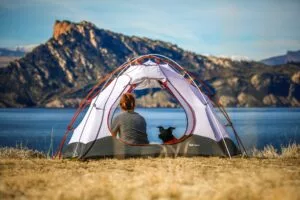
How to Make Your Tent Last Longer
Your tent is an investment. Maximize your tent’s lifespan with this guide.
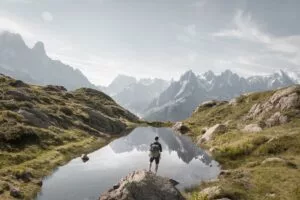
Hiking Guide: Getting the Most out of Day-hiking and Backpacking
Hiking can be the best way to enjoy the sights and sounds of nature. This guide will help you get started.
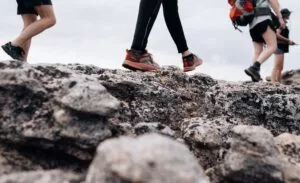
The Best Hiking Boots and Trail Shoes in Canada
Boots and shoes are perhaps the most important piece of gear for any hiker.
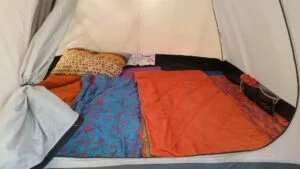
The Best Sleeping Pads in Canada
Sleep is important, especially when camping. Stay well rested with the best sleeping pads in Canada.
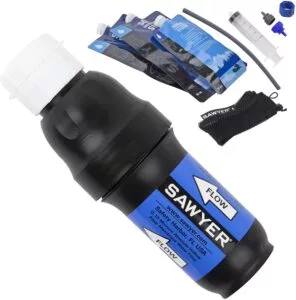
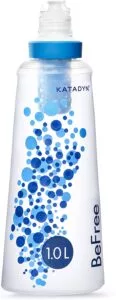
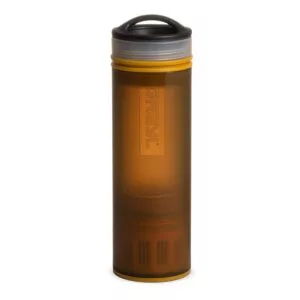

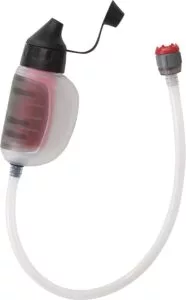
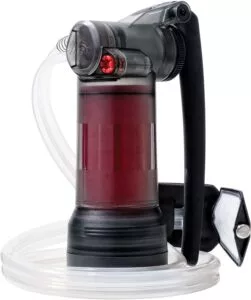

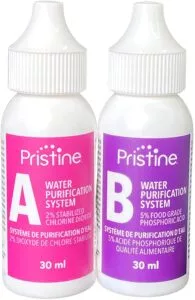

alternatives to allergy medication does allegra require a prescription otc allergy medication comparison chart